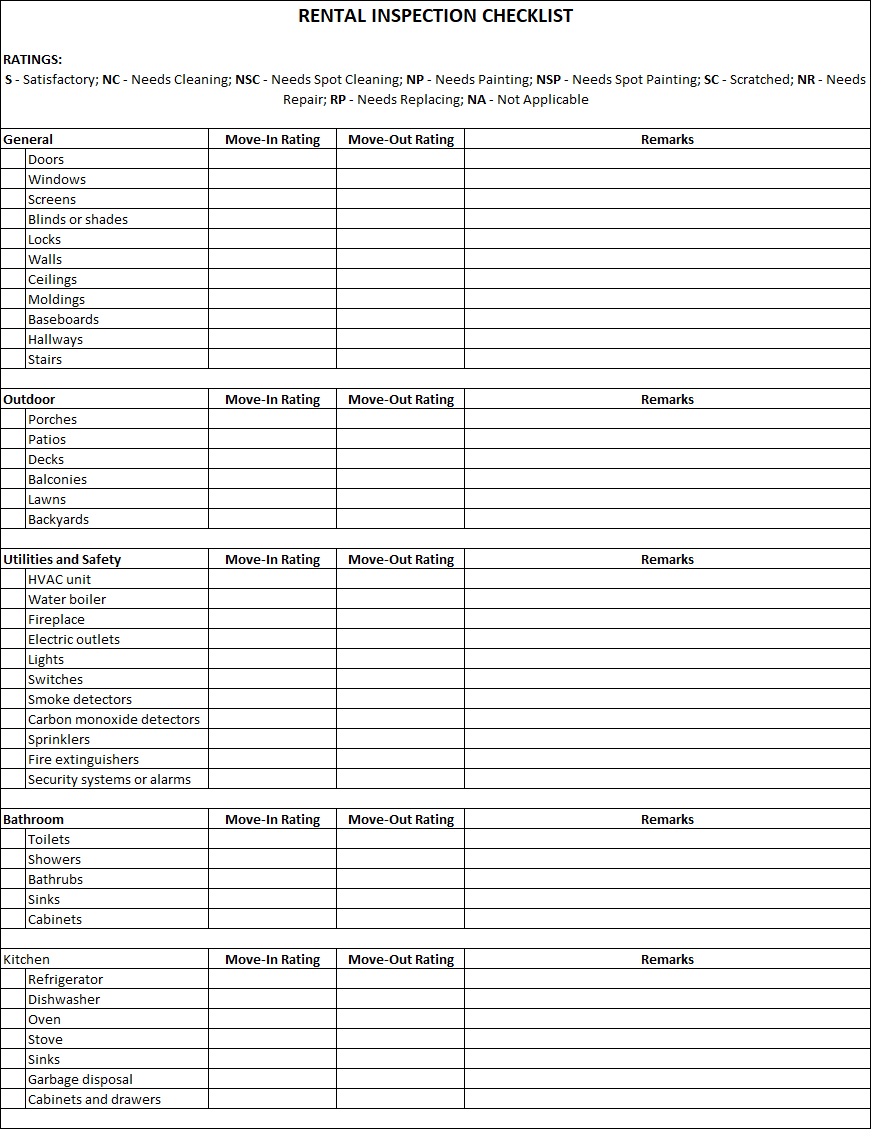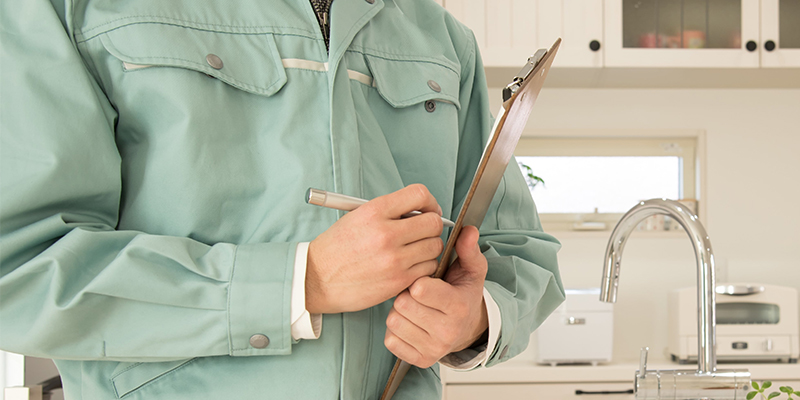As a landlord, it is your job to conduct regular inspections of your rental property to ensure it remains in good condition. This is where a rental inspection checklist can come in handy.
What to Include in a Rental Inspection Checklist
What is a rental inspection checklist? Simply put, it is a checklist consisting of items in your rental property that you must inspect prior to tenant move-in or after move-out. You can also use the checklist as your guide when you conduct periodic inspections of your rental property.
It is important to have your landlord inspection checklist when you perform a rental walk-through with your tenant. What is a rental walk-through? A rental walk-through takes place prior to a tenant moving in and after a tenant moves out. It involves the thorough inspection of a rental property to assess its condition.
What do they check in a rental inspection? The contents of your rental inspection checklist depend on the specific items within your rental property. Each property is different, and one property does not necessarily have the same appliances as another. It is best to tailor your checklist according to your exact needs.
Generally, though, your inspection checklist should include all the fixtures on your property. That includes the walls, ceilings, doors, windows, floors, appliances, and electronics. It should also include plumbing and electrical fixtures.
Why Is Rental Inspection Necessary?
An apartment inspection is necessary because it helps the landlord and tenant identify any pre-existing damages to the rental property.
Once identified, the landlord cannot take these damages against the tenant once they move out. The landlord must also repair any major damages to the property and provide livable conditions for the tenant, as is their right to a habitable home.
Types of Rental Inspections
There are four different types of rental property inspections:
- Move-In Inspection. This inspection takes place when a tenant first moves into your rental property. Have a move-in inspection checklist with you when performing this. After the inspection, your tenant should sign the form and include the date. It is also a good idea to document any damages with photos.
- Move-Out Inspection. This inspection takes place when a tenant moves out of your rental property. It serves the purpose of checking the condition of the property, and any damages caused by the tenant should be covered by their security deposit.
- Routine Inspection. This inspection takes place every so often to ensure your tenant is taking care of the property. Routine inspections will also help identify any damages that you, the landlord, should address before they worsen. It is good to have a rental inspection checklist around when performing this type of inspection.
- Drive-by Inspection. This inspection is limited to the exterior of the property, which means you do not need to enter the unit itself.
Rental Inspection Checklist Template
Whether you need a rental walkthrough checklist, a quarterly rental inspection checklist, or a periodic inspection checklist for rental units, the template below can act as your guide:

Download Your Rental Property Inspection Checklist Here
Frequently Asked Questions on Rental Property Inspections
Who should perform rental property inspections?
It is entirely possible to perform the inspection yourself. With the help of a rental inspection checklist, the task should come easy enough. But, you also have the option of hiring a professional service.
Veteran rental property inspectors are more adept at examining properties and assessing their condition. They already know what to look for and how to identify problem areas. Plus, most services provide you with a detailed yet easily understandable report after the inspection, complete with photos.
If you employ a property management company or property manager, they usually conduct rental inspections, too. Be sure to check if such a service is included in their overall package, though.
How do I prepare for a rental inspection?
As a landlord, you must prepare a rental inspection checklist prior to an inspection to make sure you do not miss any crucial items. You can use the template above as a jumping-off point, though you will probably need to add or remove items that are unique to your property.
You should also coordinate schedules with your tenant so that you can lock down a date for the inspection. It is best to have your tenant present when you conduct the actual inspection so they can personally view the condition of the property and sign documentation. Having your tenant attend the inspection will also allow you to talk to them about any required repairs.
Tenants, on the other hand, can prepare for a rental inspection by assessing the property themselves first. It is a good idea to repair minor damages and clean the place up. Landlords will appreciate the effort and see that you are taking good care of their property.
How often can you inspect a rental property?
Ideally, you should inspect your rental property every three to six months. This will allow you to stay on top of any normal wear and tear as well as damages to your property. It is also a way you can ensure your tenant is remaining compliant with the terms of your lease.
Can a landlord do a surprise inspection?
Generally, you must give your tenant prior notice when you intend to perform an inspection. The exact notice period depends on laws specific to your state, so make sure to check with an attorney to stay out of legal trouble. It is also worth noting that most states do not allow surprise inspections.
How much notice is required for a rental inspection?
It depends on where you are located. For instance, in Washington, landlords must provide tenants at least two days written notice, except in the case of an emergency. Some states have specific notice periods, while others only say that the notice period should be reasonable. Check your state laws to know for sure.
Can a property manager take photos during an inspection?
Yes, a property manager or landlord can take photos of the property during an inspection. Photos act as supporting documentation of the property’s condition. But, it is best to keep any personally identifiable or valuable items out of photos. This includes people, pets, photographs, laptops, cellphones, jewelry, and the like.
Make Property Inspections a Breeze
Property inspections are an essential aspect of rental management, but it is not always easy. A lot of things can go wrong, like skipping over items and failing to document the process. But, with a rental inspection checklist, you can ensure you cover everything and leave nothing to chance. Plus, you can have tenants sign the checklist or form as proof of their acknowledgment.
Tired of being a landlord? Leave the property management duties — including inspections — to an experienced professional. Look for the best property management company in your area with the help of Rental Choice.
RELATED ARTICLES:
- Water Damage In Apartments: Who’s Responsible For Fixing It?
- Everything You Should Know About Rent Collecting
- When Is It Right To Evict A Tenant?




 Company
Company